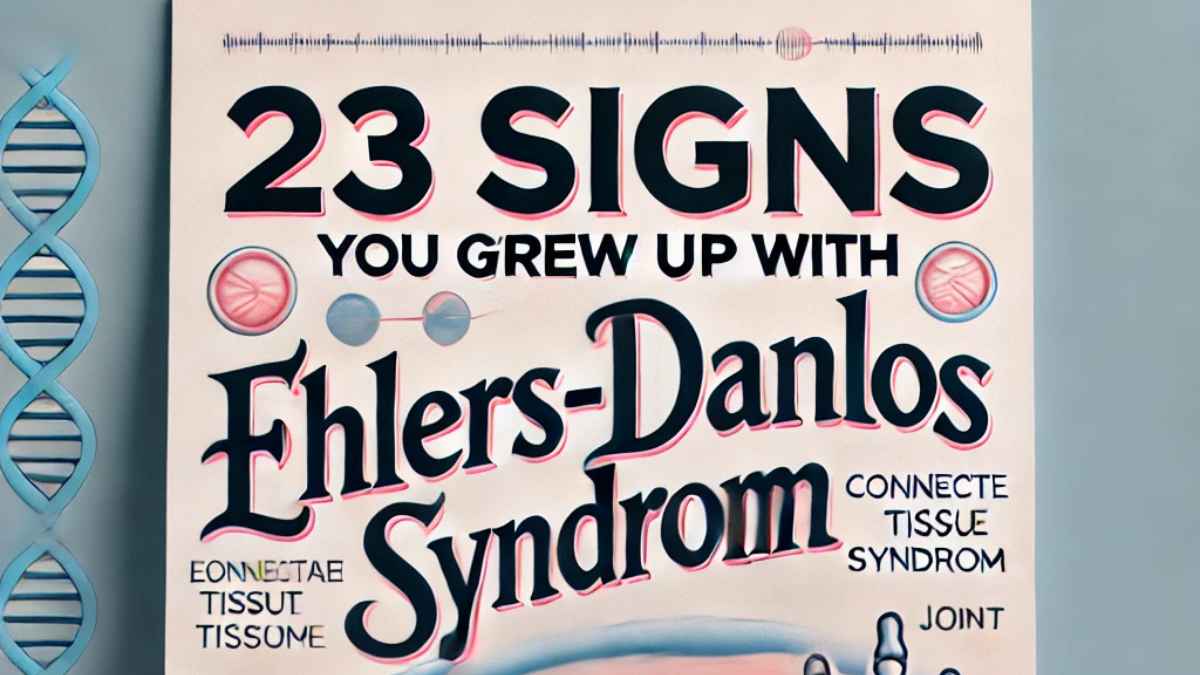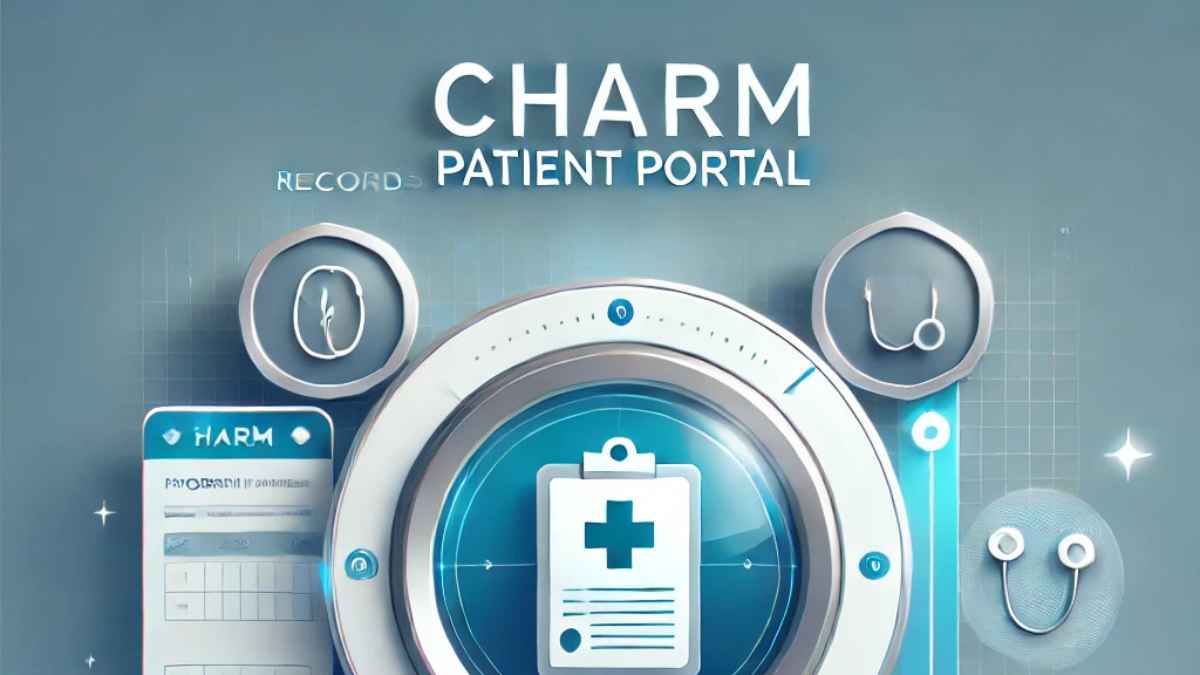Ehlers-Danlos Syndrome (EDS) is a group of genetic disorders that affect the body’s connective tissues, leading to a variety of symptoms that can significantly impact daily life. Growing up with EDS often means navigating a range of challenges that may not be immediately apparent to others. In this article, we’ll explore 23 signs that may indicate you grew up with EDS, along with an understanding of the condition, its uncommon and strange symptoms, facial characteristics, effects on daily life, medications to avoid, and answers to frequently asked questions.
What is Ehlers-Danlos Syndrome?
Ehlers-Danlos Syndrome (EDS) is a group of inherited disorders that affect connective tissues, primarily collagen. This genetic condition impacts the skin, joints, and blood vessels, leading to hypermobility, fragile skin, and chronic pain. There are several types of EDS, with the most common being hypermobile EDS (hEDS).
Understanding Ehlers-Danlos Syndrome
EDS is often misunderstood or misdiagnosed due to its diverse range of symptoms. It can affect multiple systems in the body, making it difficult to diagnose. While joint hypermobility is a hallmark feature, there are numerous other signs and symptoms that individuals with EDS experience.
Ehlers-Danlos Syndrome and Connective Tissue Disorders
EDS is classified as a connective tissue disorder, which means it primarily affects the body’s structural proteins. Connective tissues provide support to the skin, joints, blood vessels, and organs. People with EDS often experience excessive joint flexibility, skin that bruises easily, and problems with wound healing.
Ehlers-Danlos Syndrome Types
There are thirteen different types of EDS, each varying in severity and symptoms. The most well-known types include:
- Hypermobile EDS (hEDS): Characterized by joint hypermobility, chronic pain, and digestive issues.
- Classical EDS (cEDS): Features highly elastic skin and severe bruising.
- Vascular EDS (vEDS): A life-threatening form affecting blood vessels and internal organs.
- Kyphoscoliotic EDS (kEDS): Leads to severe spinal curvature and muscle weakness.
- Arthrochalasia EDS (aEDS): Causes severe joint hypermobility and frequent dislocations.
Uncommon Symptoms of Ehlers-Danlos Syndrome
Beyond joint issues, EDS presents with many lesser-known symptoms, including:
- Chronic fatigue
- Easy bruising
- Delayed wound healing
- Gastrointestinal problems
- Dysautonomia (autonomic nervous system dysfunction)
- Dental issues such as fragile teeth and gum recession
- Poor proprioception (body awareness)
- Frequent joint dislocations
What Are the Facial Signs of EDS?
People with EDS often have distinctive facial features due to the effect of the condition on collagen. Some of these signs include:
- Large, wide-set eyes
- Thin, translucent skin with visible veins
- A high, narrow palate
- A small chin (micrognathia)
- A long, narrow face
- Premature aging or, conversely, a youthful appearance due to the skin’s elasticity
Strange Symptoms of EDS
Some symptoms of EDS are surprising and less commonly associated with the condition:
- Ehlers-Danlos toenails: Brittle, peeling nails that are prone to breakage
- Temperature regulation issues: Difficulty handling heat or cold
- Unpredictable allergic reactions: Sensitivity to foods, medications, or environmental triggers
- Poor wound healing: Scars that stretch over time
- Autonomic dysfunction: Heart rate fluctuations and dizziness upon standing
- Ehlers-Danlos syndrome intelligence: Some individuals report heightened problem-solving abilities, potentially linked to neurodivergence
How EDS Affects Daily Life
Growing up with EDS can influence various aspects of daily life:
- Physical Activity: Joint instability and pain may limit participation in sports or physical activities.
- Educational Challenges: Frequent medical appointments and fatigue can impact school attendance and performance.
- Social Interactions: Visible symptoms or the need to avoid certain activities may affect social relationships.
- Mental Health: Chronic pain and the challenges of managing a chronic condition can lead to anxiety or depression.
Ehlers-Danlos Syndrome Treatments
There is no cure for EDS, but management strategies include:
- Physical therapy: Strengthening muscles to support joints
- Pain management: Using medications cautiously to avoid side effects
- Bracing and supports: Stabilizing joints to prevent dislocations
- Occupational therapy: Teaching adaptive techniques for daily activities
- Lifestyle adjustments: Avoiding activities that put excessive strain on joints
Medications to Avoid with Ehlers-Danlos Syndrome
Certain medications can worsen symptoms or cause additional complications for people with EDS. These include:
- NSAIDs (like ibuprofen and aspirin): May increase the risk of bruising and gastrointestinal issues
- Fluoroquinolone antibiotics: Can weaken connective tissues further
- Beta-blockers: While sometimes prescribed for POTS (a condition common in EDS patients), they can exacerbate fatigue
- Opioids: Risk of dependence and worsening of chronic pain over time
- Steroids: Can further weaken connective tissues
23 Signs You Grew Up with Ehlers-Danlos Syndrome
- Extraordinary Flexibility: Being able to perform “party tricks” with your joints, such as bending fingers backward or extending elbows beyond the normal range.
- Frequent Joint Dislocations or Subluxations: Experiencing joints that dislocate or partially dislocate with minimal trauma.
- Chronic Joint Pain: Persistent pain in multiple joints, often misattributed to growing pains during childhood.
- Delayed Motor Milestones: Taking longer to crawl, walk, or run compared to peers due to joint instability.
- Easy Bruising: Noticing bruises appearing frequently without recalling any injury.
- Stretchy Skin: Having skin that stretches more than usual but returns to normal, often demonstrated to friends and family.
- Slow Wound Healing: Cuts and scrapes that take an unusually long time to heal and may leave significant scars.
- Soft, Velvety Skin: A skin texture that feels exceptionally smooth to the touch.
- Frequent Sprains and Strains: Suffering from sprained ankles or strained muscles with regularity.
- Fatigue: Experiencing extreme tiredness that doesn’t improve with rest, affecting daily activities.
- Digestive Issues: Facing chronic constipation, abdominal pain, or other gastrointestinal problems.
- Dizziness or Fainting Spells: Feeling lightheaded or fainting, especially upon standing quickly.
- Temperature Sensitivity: Struggling to regulate body temperature, feeling too hot or too cold compared to others.
- Frequent Headaches or Migraines: Chronic headaches, often linked to cervical instability or blood flow issues.
- Clicking or Popping Joints: Experiencing joints that make noticeable sounds when moved.
- Difficulty Recovering from Injuries: Minor injuries, such as sprains, taking longer to heal than expected.
- Flat Feet: Having little to no arch support, causing discomfort when walking or standing for long periods.
- Chronic Muscle Pain or Weakness: Feeling soreness or weakness even after minimal physical exertion.
- Thin or Translucent Skin: Noticing veins visible through the skin, especially on the chest and hands.
- Dental Problems: Experiencing frequent cavities, fragile teeth, or gum recession despite good oral hygiene.
- Poor Balance or Coordination: Having difficulty maintaining balance or appearing clumsy.
- Stretch Marks Without Weight Change: Developing stretch marks on the skin without significant weight gain or pregnancy.
- Hypermobile Toes or Toenail Issues: Having unusually flexible toes or experiencing brittle, ridged toenails.
FAQs
There are online self-assessment quizzes available, but a formal diagnosis requires a medical evaluation by a geneticist or specialist.
Beyond hypermobility, symptoms like autonomic dysfunction, gastrointestinal issues, and poor temperature regulation are less commonly recognized.
While no official at-home test exists, the Beighton score test can help assess hypermobility.
EDS can cause unique facial features, such as large eyes, thin skin, and a high palate.
Many individuals with EDS experience brittle, ridged, or easily breakable toenails.
The hyperelastic skin in EDS may delay visible signs of aging, making individuals appear younger than their age.
Some anecdotal reports suggest a correlation between EDS and neurodivergence, though scientific studies are limited.
NSAIDs, fluoroquinolones, steroids, and opioids should be used with caution or avoided when possible.
Resources:
Growing up with Ehlers-Danlos Syndrome presents unique challenges, but awareness and proper management can improve quality of life. If you suspect you have EDS, consult a healthcare professional for further evaluation and support.
Also Read: Stress Management: A Comprehensive Guide to Types, Symptoms, and Tips

MoneyMantra, is a passionate content creator with over 5 years of experience in writing about the intersection of technology, business, finance, education, and more. With a deep understanding of how these fields empower both individuals and businesses



